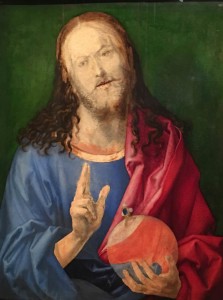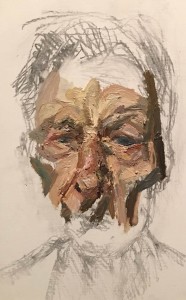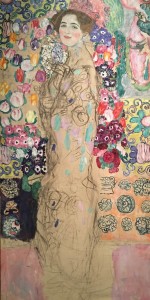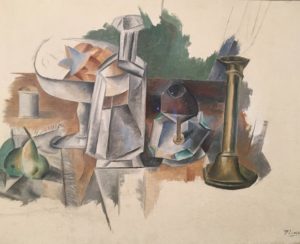When the Whitney Museum of American Art moved to its new location downtown in 2015, the Metropolitan Museum expanded from its iconic 5th Avenue location to include the vacated 1966 building designed by Marcel Breuer located at E. 75th and Madison. Opened on March 18, 2016, the intent of the newly leased space is to expand the Met’s modern and contemporary visual and performing arts program through monographic and thematic exhibitions and performances such as the current solo exhibition of the works of deceased abstract artist Nasreen Mohamedi. But, in a twist that distinguishes these endeavors from its competitors such as MoMA, the Breuer also draws upon many of its own important pre-20th century historical works and loaned works to present new comparative viewer experiences that underscore the relevance and appreciation of art history.

In the inaugural exhibition “Unfinished: Thoughts Left Visible” the Met Breuer does what only a museum with the depth of the Met can do and that is to hang 550 years of art history from the Renaissance to the present in a way that unites old and new in more than just a chronological timeline. In this exhibition, visitors are faced with 197 “unfinished” works by masters ranging from Titian, Michelangelo, Rubens and Rembrandt to Monet, Degas and Cezanne to Picasso, Freud, Pollock and Neel, to name but a few.
With each work, the viewer is asked to consider whether the work is unfinished or finished and in so doing to focus both on technical execution of the work and the intent of the artist. And while some works are clearly “unfinished” such as the work above by Albrecht Dürer, others appear to adopt an intentioned lack of finish such as Ferdinand Hodler’s 1915 watercolor of his deceased mistresss where the unfinished purposely conveys the finish of a life.
Exploring the age old debate about whether certain historical works were finished or not, the Met Breuer showcases select works for multiple purposes. First, many of the unfinished works invite the viewer to investigate the artist’s process such as this Self-Portrait (2002) by Lucian Freud in which the artist’s layering and build-up of paint to produce realistic flesh-like colors and facial features is evident.

Similarly, in the work below by Gustav Klimt, with its underdrawing and contrast between its completed and uncompleted sections, the viewer is provided insight into the stages of his portraits for which Klimt became famous. Second, this work and many others give the curators the opportunity to tell the viewer why the painting remained unfinished. Here, the viewer learns that the subject (Ria Munk) was a young woman who committed suicide before the commission and that the artist died before he could complete the work. A wide range of stories are told, perhaps for the first time, enriching the viewer’s experience.

Finally, “unfinished” works are used by the curators to show how artists throughout the centuries intentionally chose the unfinished to experiment and adopt important aesthetic alternatives to the traditional view of finish. By using seemingly unfinished approaches, artists could be more expressive and convey spontaneity and even challenge the viewer to use his/her own imagination to complete the concept. In this work by Picasso, the artist has purposely painted the focal point with great detail while leaving the margins “unfinished” and yet he considered the work finished as evidenced by his signature.

So, on your next foray to the Big Apple, be sure to take in this new Met experience!
Shannon Robinson is the curator and chairperson of the national biennial exhibition Windows to the Divine (Nov. 17-Dec. 13, 2016) and the national symposia sponsored by Collectors for Connoisseurship (Nov. 2015 at Denver Art Museum and Oct. NYC 2017). More about Shannon…






